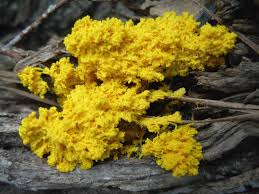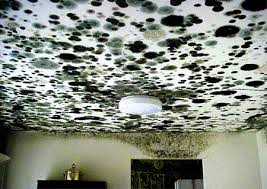What is mould?
Moulds are simple, microscopic organisms that digest and destroy organic materials. Moulds release tiny spores which travel through the air, and may be present within your home. Dependent on the type of mould, it is the spores that moulds release which may be hazardous to our indoor air quality. Mould spores producing mycotoxins are particularly hazardous to humans, with research suggesting that prolonged exposure can lead to many forms of respiratory illness.
Types of mould
Below is a brief description of each mould that is commonly found within Perth homes.
Slime Mould Physarum polycephalum
Often referred to as the ‘many-headed slime’, this form of mould inhabits in shady, cool, moist areas such as sub-floor areas, decaying leaves & logs.
The plasmodium of the Physarum polycephalum can produce dark “fruiting bodies” (fructifications) that contain spores, which are often triggered by light exposure. Physarum mould can be very toxic.

Toxic Black Mould Stachybotrys
Stachybotrys mould grows on high cellulose material such as wood, wicker, hay, paper and cardboard. They are also commonly called ‘black mold’ and sometimes ‘toxic black mould’.
This mould requires very wet or high humid conditions for days or weeks in order to grow.
Common symptoms in humans are dermatitis, pain and inflammation of the mucous membranes, burning sensation in nasal passages, tightness of the chest, cough, nose bleeds, fever, headache and fatigue.

Aspergillus (Grey, brown, yellow, green, white or black)
Aspergillus is the most common household mould & it is generally believed that the amount of airborne spores of Aspergillus spp. in indoor air is higher than outdoors at any given time.
Species of Aspergillus have been isolated from damp walls, wallpaper, PVC/paper wall covering, gypsum board, floor, carpet and mattress dust, upholstered-furniture dust, acrylic paint, UFFI, leather, HVAC insulations, filters and fans, humidifier water, shoes, leather, bird droppings and potted plant soil, plastic and decomposing wood.
They can be found in almost any home or office. Most are allergens or toxic. Aspergillus are associated with numerous respiratory disorders as well as infections of the ear and eye. Four known aspergillus mould varieties are aflatoxins and one of the most carcinogenic substances yet discovered, more toxic than many known industrial carcinogens. High hazard level.
Cladosporium (Green, brown, grey, or black)
Research suggests Cladosporium is a trigger for asthmatic attacks, and is one of the most widespread moulds known to threaten indoor air quality within a home. It includes about 40 species naturally found in soil, on decaying plant material and as plant pathogens.
In an indoor environment, Cladosporium spp. occur as secondary wall colonizers, appearing after the primary ones such as penicillum species,aspergillus and willemia sebi. Cladosporium is very common on wet building material (e.g., gypsum board, acrylic painted walls, wood, wallpaper, carpet and mattress dust, HVAC fans, and wet insulation in mechanical cooling units).
Ulocladium (Black or grey)
Ulocladium is common in house dust and bedding and in HVAC equipment. In buildings, Ulocladium is commonly found in damp or wet areas such as bathrooms, kitchens and basements and around windows. It is frequently isolated from painted surfaces, damp wall finished with wallpaper or water based emulsion paint; floor and mattress dust. It grows on very wet walls and particleboard.
Because of its high water requirements it is considered an excellent indicator of water damage. Its presence in indoor environment together with other molds such as stachybotrys, fusarium and chaetomiumis an indication of water damage. Ulocladium has been reported to cause Type I (hay fever) allergy.
Acremonium (White, grey or brown)
Acremonium produces very potent mycotoxins (toxins produced by fungi). They have the ability to damage the immune system, organs, bone marrow, and affect mental abilities. They are a known carcinogen. Nearly all varieties release a horrible smell. Acremonium was the primary fungus in numerous homes where the occupants experienced nausea, vomiting and diarrhea.
Acremonium species are primarily isolated from acoustic and thermal fibreglass insulation used in heating ventilation and air conditioning systems, cooling coils, drain pans, windowsills, and water from humidifiers. Also found on carpet and mattress dust, damp or wet walls (especially in basements), gypsum board and wallpaper. The most common species in indoor environment are Acremonium strictum and A. charticola. Acremonium strictum is commonly encountered in wet, cellulose-based building materials suffering from chronic wet conditions. It can also be recovered from outside air samples.
Where is mould found?
In order to thrive mould requires dampness, darkness and poor ventilation. As such, the following areas are particularly prone to allowing mould growth:
- Any porous material allowing moisture entry
- Mechanical ventilation systems that are not performing as intended
- Sub-floor areas (including growth on the sub-floor timbers)
- Within roof voids (specifically ceilings in close proximity to exhaust fans, or areas where roof leaking has been identified)
- Inside robes & cupboards
- Wet rooms and shower recesses (particularly the walls within the shower recess where the waterproofing compound has broken down, or any areas of surface condensation)
- Windows, blinds, and curtains
- Timbers to window perimeters and on external walls
- On the face of house guttering
- Ceilings
Mould detection
Key to mould growth is moisture. The main causes of mould growth are poor drainage and poor ventilation, and critical to preventing the spread of mould is removal of the moisture source.
Cap-It-All building inspections is accredited in mould identification and as such will perform the appropriate checks when conducting your comprehensive pre-purchase building inspection. In many areas where mould may be found or conditions for growth are created, ensure that your inspector carries the right equipment and has the relevant experience to be able to conduct the appropriate investigations.
For example, the use of thermal imaging to the back of a wall that is also located within the shower area proved that the waterproofing membrane had broken down and as a result the moisture created physarum growth within the home. As the growth was identified fairly early it was able to be contained without major remedial work, saving our client money in the future.
Upon the identification of mould within the home we are able to advise on the best course of action, discussed in more detail below.
How to get rid of mould
Mould removal is a specialist task and should be undertaken by an appropriately trained professional.
Complete removal of the mould with replacement of the building elements and removal of the moisture source is always the favoured option when dealing with how to get rid of mould. However, after assessment of the severity of the mould growth, cleaning may be an option. Generally, any area of mould less than 1m2 should be able to be cleaned by normal building maintenance personnel who have been trained in mould hazard awareness, PPE, and effective methods of cleaning mould.
Treatment options usually engaged when conducting the cleaning of mould include:
- Tea tree oil: A 3% mixture is used.
- Fermented Vinegar: An 80% white fermented vinegar solution is applied to the surface, left for at least twenty minutes, the lightly sponged clean with water.
The following should be considered when cleaning mould:
- Never brush the surface as this releases more mould spores into the air.
- DON’T USE BLEACH. Bleach only discolours the surface of the mould, and as such the toxins continue to be release without being easily identifiable.
After the removal of mould you should ensure that the moisture source has been removed and conduct the relevant inspections and maintenance around your home to ensure that the growth does not return. If you are concerned with the mould levels within your home or require a building inspection, contact Cap-It-All building Inspections.
